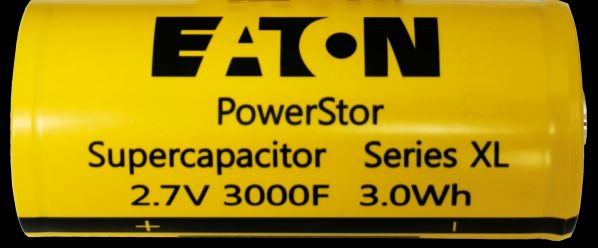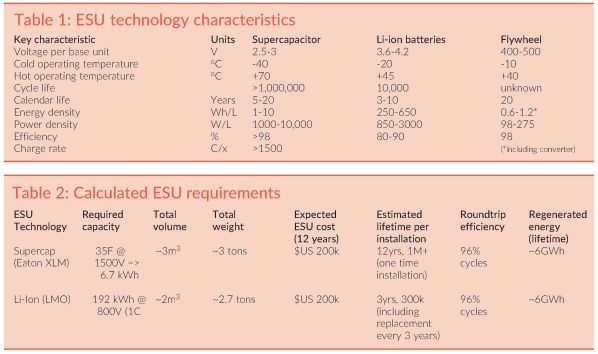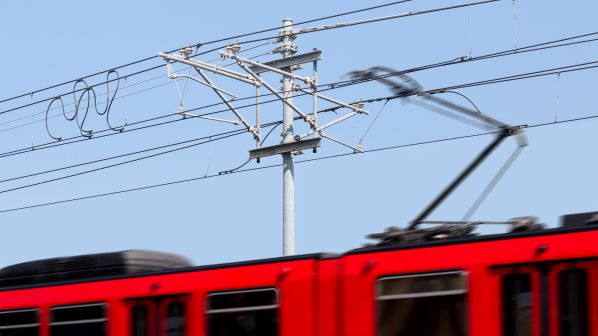TRAINS are heavy energy consumers. The energy efficiency of modern trains is improving but the overall power required for acceleration is increasing, creating a challenge for local substations and utilities. Ultimately, increasing power requirements can lead to higher energy spend.
Additionally, trains carry a huge potential of mechanical energy that is normally wasted during braking, typically as heat dissipated through brake resistors. There is clearly room for improvement to address both the increasing power demand and recovery of the braking energy, further enhancing energy efficiency and reducing operational costs.
It sounds like a good idea to regenerate the braking energy and feed it back to where it is needed most. This works well for electric cars and other vehicles, so why couldn’t it work for trains? Studies show that 30-40% of traction energy could potentially be recovered and 15-20% could effectively be regenerated. The total regenerative effectiveness depends on several factors such as the type of substation, the catenary voltage, the train’s braking system, the braking frequency, conversion losses and safety considerations, among others.
A small percentage of the braking energy is often and easily fed back to the catenary directly as long as the allowed maximum voltage level is respected. This energy can be used directly to supply auxiliary loads on the train such as lighting, HVAC and local controls.
A more flexible method of energy regeneration is to feed back electrical current to the utility grid through a reversible substation
If there is another train accelerating at the same time on the same section of track, a significant amount of energy can be transferred to the catenary. Smartly developed timetables can take advantage of concurrent braking and acceleration and save energy instantly, thereby using much less substation power.

A more flexible method of energy regeneration is to feed back electrical current to the utility grid through a reversible substation. This option requires significant investment and alignment with the energy providers
to ensure that the utility can reliably accept and manage the regenerated energy in the area.
The most flexible option is to store the regenerated energy in an energy storage unit (ESU). Storing the energy at the trackside gives the infrastructure manager the flexibility to store and utilise the braking energy in the most appropriate way for a specific section of line.
The energy storage system (ESS), a combination of power electronics and an ESU, may serve the following purposes:
- energy saving: recovered energy used to power station facilities (low power discharge to a 400V dc three-phase network or 400-800V dc electric vehicle charging stations)
- peak power boost: recovered energy is fed back to the catenary as the train accelerates, reducing or even eliminating high power demand penalties or enabling the use of smaller substations, and
- emergency power: during a traction power outage, the ESS can provide power for the station or the catenary, enabling trains to move at low speed into stations or out of tunnels.
Each substation and section has its own challenges and capabilities which require careful evaluation. Braking energy regeneration may not be a cost efficient option for all situations and applications. Good candidates are normally sections with insufficient power (steeply-graded lines, tunnels, over or underpasses) or substations burdened by heavy traffic.
Storing the energy at the trackside gives the infrastructure manager the flexibility to store and utilise the braking energy in the most appropriate way for a specific section of line.
The energy regeneration potential and the required ESU may differ from section-to-section, even on the same line. It may also be a hybrid system with a combination of different technologies at the same substation.
The challenges facing the different ESU technologies are the same:
- 1-10MW power capture in seconds (normally 30-60 seconds) during recovery
- 1-10MW power delivery in seconds (30-60 seconds) while boosting the catenary voltage
- braking power differs from train-to-train depending on braking speed, capability, weight and other factors, and
- braking/boosting cycle frequency is unpredictable in many cases. This may result in overheating of the ESU or inefficient operation (in case of under or oversized system capacity).
These challenges can be overcome by adopting a well prepared charge-discharge management system and an appropriate ESS design. There are a number of key considerations that need to be taken into account in the ESU selection and sizing evaluation.
ESU Technologies
The ESU can be based on a variety of technologies, including:
- Batteries: the main advantage offered is the highest energy density among technologies discussed here. Modern Li-Ion technologies provide a possible solution for high cycle life and good power density. The disadvantage is the relatively short lifetime caused by the energy transfer and limitations on the environmental conditions such as operating temperature.
- Supercapacitors: the electrostatic charge-discharge movement offers nearly unlimited energy transfer during the lifetime. Lifetimes of up to 15-20 years can be achieved without any need for maintenance. Supercapacitors also offer the highest power density and work well in a wide temperature range (-40 to +65°C). A disadvantage is the low energy density resulting in a high dollar per kWh cost.
- Flywheels: kinetic energy storage has been commercially available for some time offering lifetimes of up to 20 years, if maintained properly. Flywheels can offer a very good dollar per kW and dollar per kWh option if the energy/ power ratio of the specific section’s ESU can be matched by an available flywheel option. The disadvantage lies in the scaleability of flywheels. As they are only available in larger sizes, scalability is not an issue for batteries or supercapacitors, since they are constructed by smaller cells or modules. Therefore it is difficult to fine tune ESU capacity after the installation is completed. An additional disadvantage when compared with batteries and supercapacitors is the need for regular maintanance and higher continuous energy consumption to keep the heavy mass inside spinning.
All electrochemical, electrostatic and mechanical energy storage technologies may provide a suitable solution for a specific use case. As Eaton is a provider of battery and supercapacitor-based solutions, we can compare these two technologies due to the optimal combination of advantages. Table 1 describes a typical metro application operating with a 750V dc electrification system.
For the purposes of this example, it is assumed the catenary train braking is 800-900V dc and the regenerative braking is 1000A/~800kW, regeneration time is 30 seconds (based on a speed of 20km/h or more) and there is a 750V dc voltage boost during acceleration. The frequency of the regenerative cycle is 1 per 5 minutes - equivalent to 100,000 cycles per year.

The comparison shows that in this theoretical application both solutions can provide roughly equal equipment costs over their lifetime. Indeed additional operational costs should be taken into consideration to provide a more comprehensive picture of the total cost of ownership.
Table 2 illustrates a high level comparison of applications where battery or supecapacitor based ESU is recommended. A supercapacitor-based ESU is more cost effective if the regeneration frequency is greater than one per 5 minute interval due to the near infinite cycle life. It is also better suited for outdoor installations due to wide operating temperatures and can better service substation peak power boosting due to better round trip efficiency.
Supercapacitor ESUs are ideal for applications where maintenance and replacement is difficult as supercapacitors are virtually maintenance-free and have long lifetimes.
Li-ion battery-based ESUs are more cost effective if the regeneration opportunity is only occasional (not occuring at a 5 minute interval). They are suited to provide regenerated power to the physical station during peak comsumption or to be used as backup power for the catenary in the case of a power outage.
Braking energy regeneration for trains offers a huge opportunity to improve energy efficiency, reliability and power distribution of the electric grid. With the mature power infrastructure already in place and an increasing desire or directive to improve energy efficiency, there is a growing need to investigate viable solutions.

